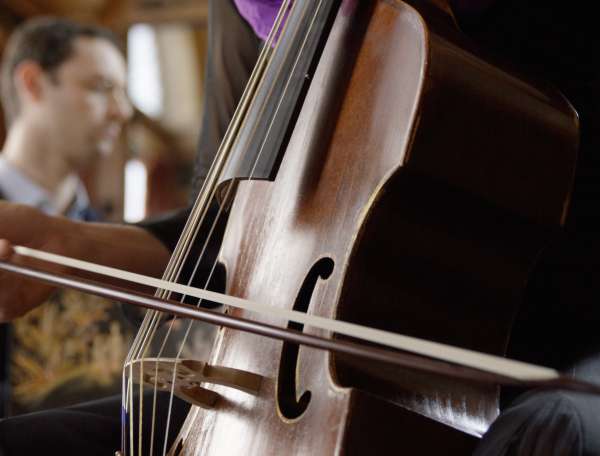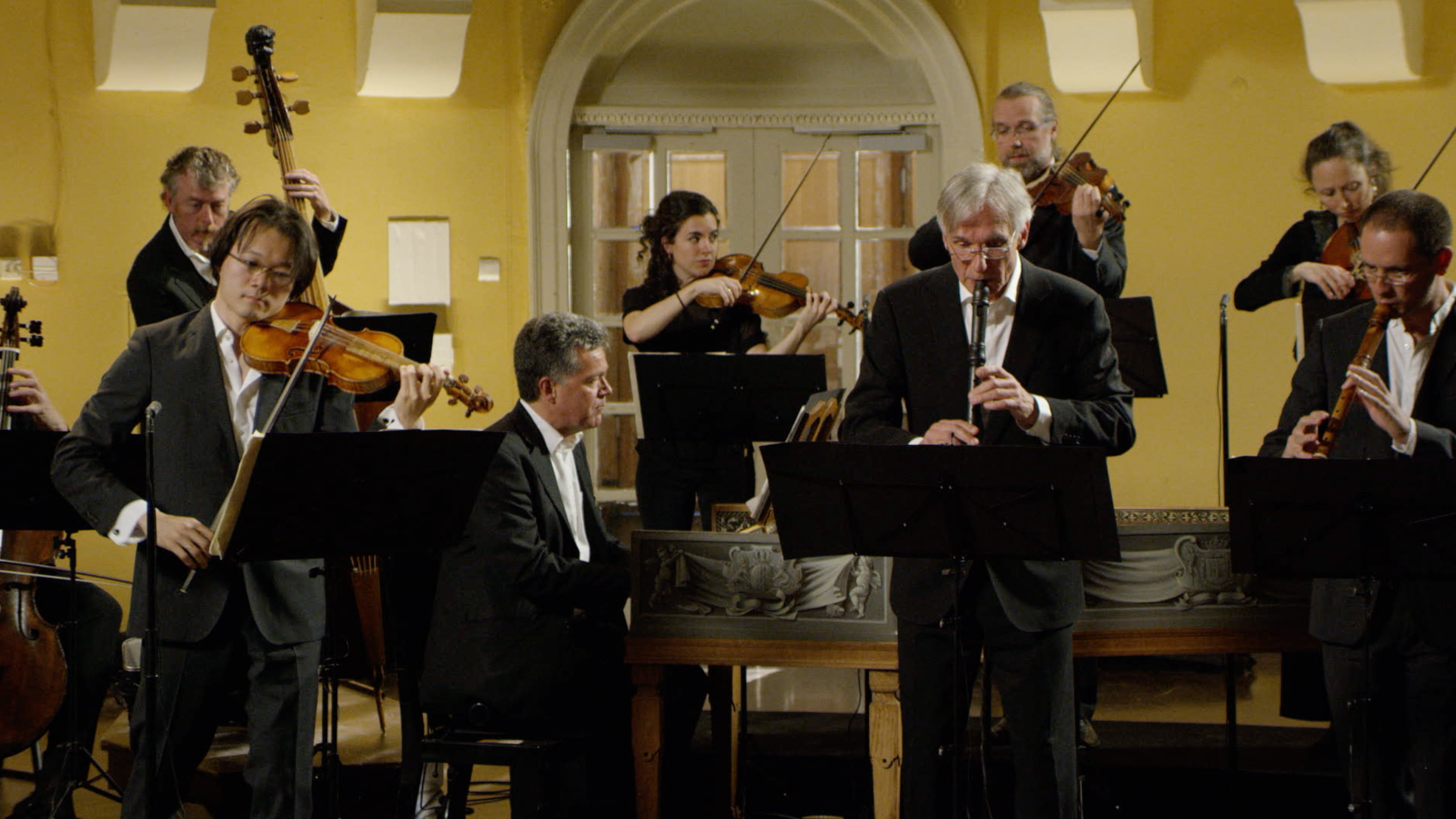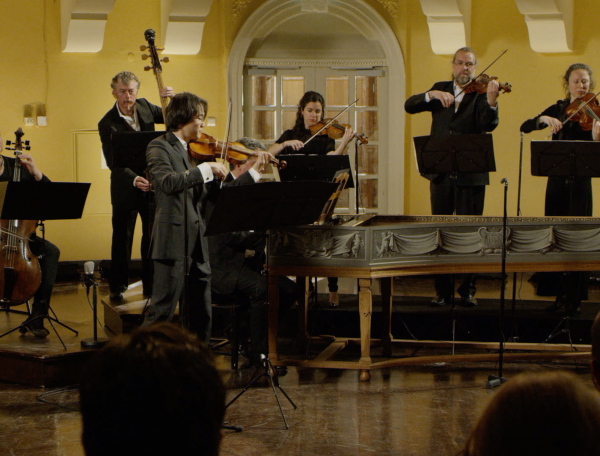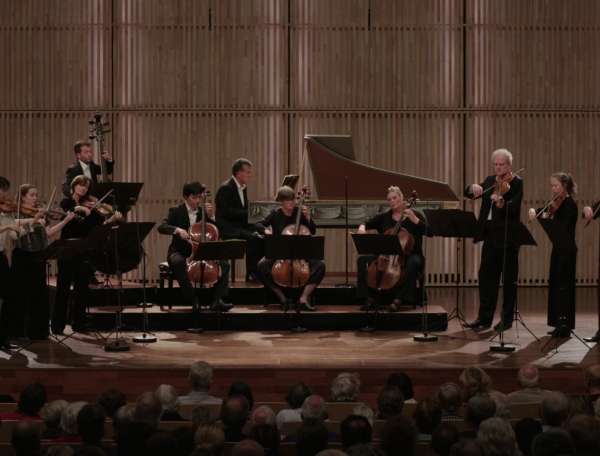

'Brandenburg' Concerto No. 4 in G major
BWV 1049 performed by the Netherlands Bach Society
conducted by Shunske Sato
Felix Meritis, Amsterdam
Behind the music
Blurring the boundaries
How Bach deliberately obscures the traditional concerto form
In this concerto, Bach is continually misleading us. Which instruments are the real soloists? Initially, the lead is taken by the two recorders, but after the introductory refrain it appears that the violin is the soloist. After the next refrain, the two recorders take over again, but they are soon trumped by the violin, which steals the show in a whirlwind of dizzying notes. And so it continues. The roles are always ambiguous, especially as far as the recorders are concerned.
In the solemn second movement, they are clearly the soloists, but in the third movement the same notes are regularly played by both. Bach deliberately obscures the usually clear contrast between soloists and ensemble. And as if wanting to underline this confusion, he starts the third movement as a fugue, a form in which all the parts are equal by definition. But just when we think it is turning into a real fugue, we hear another violin solo. Bach then goes on to intersperse the traditional alternation between tutti refrains and solo passages with fugue-like imitations. And so his play on the characteristic elements of the concerto form draws to a close in a suitably subversive and boundary-blurring way.
Brandenburg concertos, BWV 1046-1051
In March 1721, Bach sent a manuscript from Köthen to Berlin entitled ‘Six concertos with several instruments’ (Six concerts avec plusieurs instruments), dedicated to Christian Ludwig (1677-1734), Margrave of Brandenburg-Schwedt. In the preface, Bach stated that he had played for the margrave ‘a couple of years ago’ and had promised to send him ‘some of his compositions’. That was probably during a visit to Berlin in March 1719, when Bach had travelled to the Prussian capital to take receipt of a new harpsichord for the court in Köthen. The music that he sent to the margrave a couple of years later (which subsequently became known as the 'Brandenburg' Concertos) was Bach’s ultimate view of the most important large-scale instrumental genre of his day: the concerto.
A concerto nearly always involves a solo instrument (or combination of solo instruments) and an ensemble. The key idea is the alternation between one or more soloists and the whole ensemble, in a sort of light-hearted competition. In the six 'Brandenburg' Concertos, Bach explores every facet of this genre, with regard to both instrumentation and the way in which he handles the form. All the traditionally used string and wind instruments and the harpsichord appear as soloists, the musical forms range from court dances to near-fugues, and the relationship between the solos and tutti instruments is always shifting. Together, the six concertos thus form a virtuoso sample sheet of the Baroque concerto.
- BWV
- 1049
- Title
- Concerto in G major
- Epithet
- 'Brandenburg' Concerto No. 4
- Genre
- orchestral works
- Serie
- Brandenburg concertos
- Year
- 1719-1720
- City
- Köthen
- Occasion
- Dedicated in 1721 to Margrave Christian Ludwig of Brandenburg
- Special notes
- Between 1735 and 1746, Bach arranged this Brandenburg concerto no. 4 as a harpsichord concerto (BWV 1057).
With support from
Bach fund of the Netherlands Bach Society, Felix Meritis
Extra videos
Vocal texts
Original
Translation
Credits
-
- Release date
- 2 October 2015
-
- Recording date
- 19 May 2015
-
- Location
- Felix Meritis, Amsterdam
-
- Violin and direction
- Shunske Sato
-
- Recorder
- Heiko ter Schegget, Benny Aghassi
-
- Violin 1
- Lucia Giraudo
-
- Violin 2
- Pieter Affourtit
-
- Viola
- Anneke van Haaften
-
- Cello
- Lucia Swarts
-
- Double bass
- James Munro
-
- Harpsichord
- Siebe Henstra
-
- Director and editor
- Lucas van Woerkum
-
- Music recording, edit and mix
- Guido Tichelman, Bastiaan Kuijt
-
- Camera
- Robert Berger, Simon Aarden, Maarten van Rossem
-
- Lights
- Zen Bloot, Patrick Galvin
-
- Camera assistant
- Uriel Matahelumual
-
- Interview
- Onno van Ameijde
-
- Producer concert
- Erik van Lith
-
- Producer film
- Jessie Verbrugh
-
- With support from
- Bach fund of the Netherlands Bach Society, Felix Meritis
Discover
Help us to complete All of Bach
There are still many recordings to be made before the whole of Bach’s oeuvre is online. And we can’t complete the task without the financial support of our patrons. Please help us to complete the musical heritage of Bach, by supporting us with a donation!

